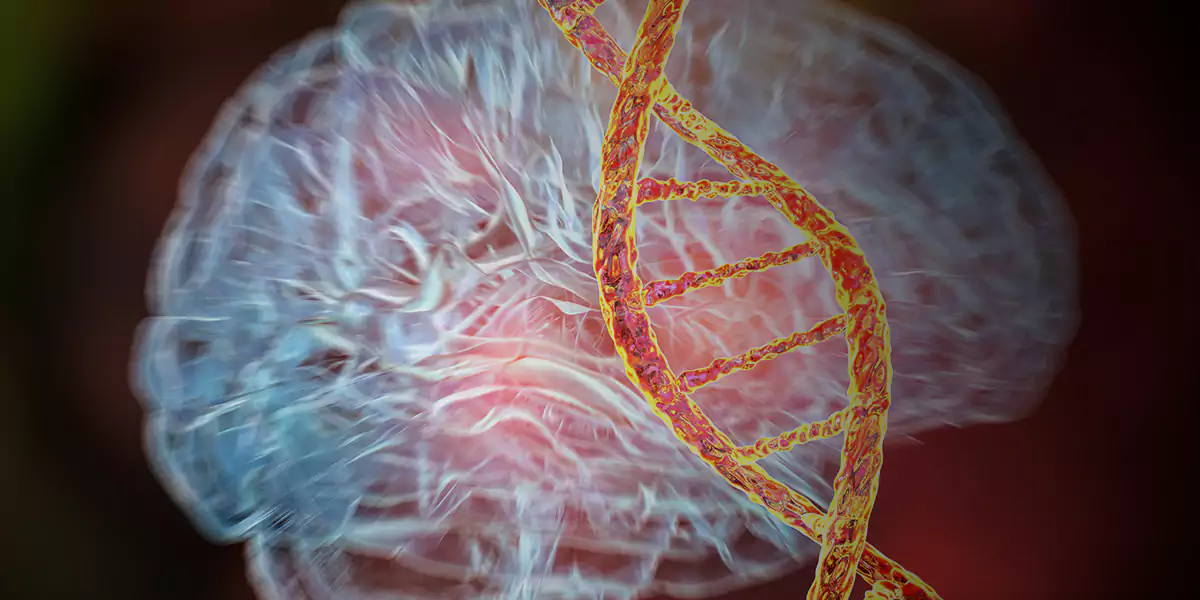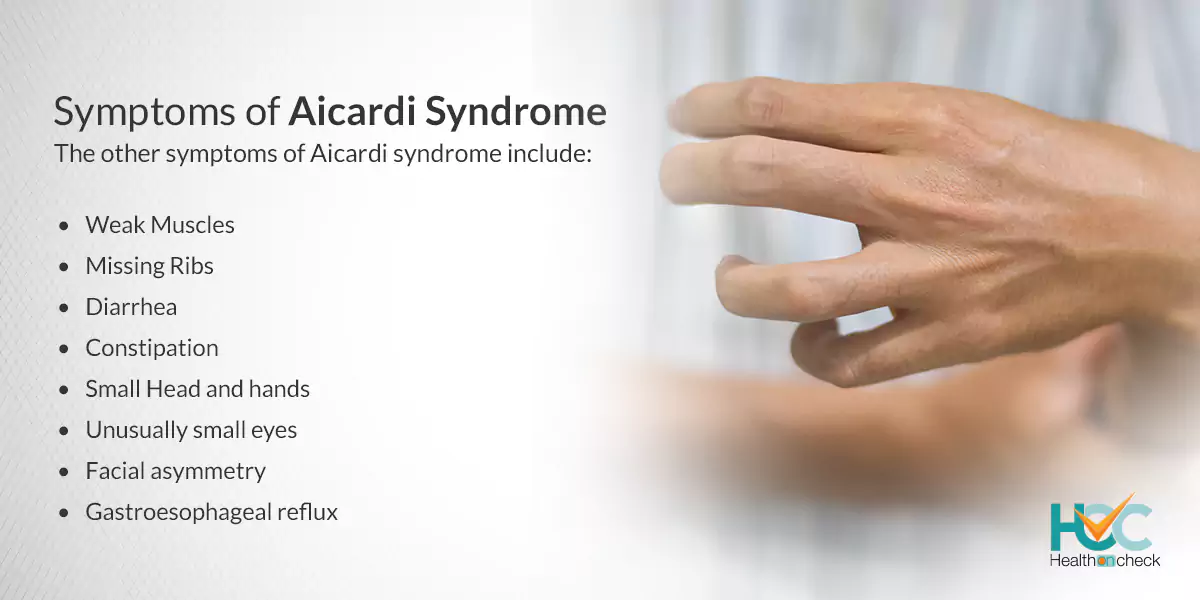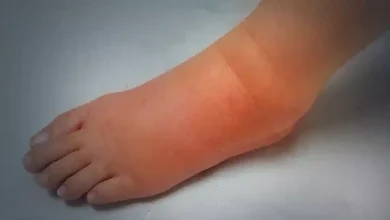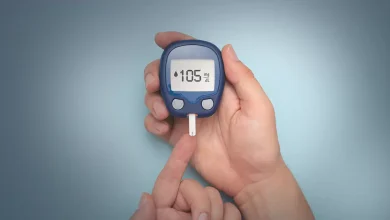All about Aicardi Syndrome

What is Aicardi Syndrome?
Aicardi syndrome is a rare congenital (present from birth) disorder in which there is a malformation of the corpus callosum, which is the structure that links the two sides of the brain. The corpus callosum is either partially or totally missing in people with Aicardi syndrome. It occurs mostly in females and males with Klinefelter’s syndrome, a condition in which a male has an extra X chromosome. Only 1 out of every 100,000 live births get this condition, which makes it a rare disease. In addition, there might be problems in the formation of the eyes, brain, and other parts of the body.
What are the Types of Aicardi Syndrome?
There are no types of Aicardi syndrome but problems people with Aicardi syndrome suffer are of three types including:
Agenesis of the corpus callosum: The structure connecting the brain’s left and right sides is abnormal.
Eye issues ( choroidal lacunae ): Small holes in the retina (back part of the eye)
Seizures: Babies born with Aicardi syndrome suffer from a type of seizure called “infantile spasms” where there will be single jerks of the whole body.
What are the Symptoms of Aicardi Syndrome?
The symptoms of Aicardi syndrome start to appear when the babies with this condition are 2 to 5 months old where they will start having jerkings and a type of seizure that occurs in infants known as infantile spasms. The severity of symptoms differs from one person to another. Some might have quite severe seizures and may not survive past childhood, while some might have comparatively milder symptoms and may survive till adulthood.
The other symptoms of Aicardi syndrome include:
- Weak Muscles
- Small Head and hands
- Missing Ribs
- Undeveloped retina, known as colobomas
- Unusually small eyes
- Facial asymmetry
- Intellectual and physical developmental delays
- Problems with eating
- Diarrhea
- Constipation
- Gastroesophageal reflux
- Spasticity, a condition where the muscles become stiff and rigid
- Abnormalities in the rib and spine, like scoliosis
- Impaired vision or blindness
- Fluid-filled cysts in the brain
- Vascular malformations
What Causes Aicardi Syndrome?
A gene located on the X chromosome is likely to cause Aicardi syndrome. Females have two X chromosomes and males have one X chromosome and one Y chromosome. Researchers are not yet able to find the gene that causes Aicardi syndrome. Aicardi syndrome is not passed from an affected mother to her child and if someone suffers from this condition, generally the other family members are also not at increased risk of developing it.
What are the Risk Factors of Aicardi Syndrome?
Aicardi syndrome occurs only in females and males with an extra X chromosome, a condition known as Klinefelter’s syndrome. So, it’s believed that it’s caused because of a defect in the X chromosome. Researchers have yet to determine the exact gene that causes the defect of the X chromosome, hence the lack of information about it makes it difficult to ascertain the risk factors for Aicardi syndrome.
What are the Complications of Aicardi Syndrome?
People with Aicardi syndrome face developmental abnormalities, both physical and mental. Absent or abnormal ribs and abnormalities of vertebrae in the spinal column are some other problems people with this condition suffer from. Skin problems, facial asymmetry, small hands, and an increased risk of tumors are a few more complications of Aicardi syndrome.
There is no cure for Aicardi and treatment is available only for controlling seizures and helping parents and children to deal with developmental delays in a better way. Based on the severity, Aicardi syndrome might be life-threatening in childhood, and a few can live into adulthood, till their 30s. Those with less severe respiratory problems have a chance of living more than those who have severe respiratory problems.
The well-being of a child with Aicardi syndrome is based on the severity of the symptoms. Two issues that make Aicardi syndrome fatal are:
Seizure activity: Most of the children with Aicardi syndrome grow out of infantile spasms but they may develop other types of seizures, such as generalized tonic-clonic seizures which can be fatal in the long run. Complications such as sudden death in epilepsy (SUDEP) is also there.
Respiratory illness: The lungs and diaphragm may become weak which can lead to life-threatening infections.
How Aicardi Syndrome is Diagnosed?
Brain abnormalities before birth can be detected through fetal MRI and prenatal ultrasound.
Test to diagnose Aicardi syndrome after birth includes:
MRI or CT scan: MRI or CT scan of the brain provides detailed images of the brain and head which are checked for abnormalities in the corpus callosum or other brain structures.
EEG: To check the brainwaves to confirm an epilepsy diagnosis, including its type.
Eye Test: A pediatric ophthalmologist will take an eye test to detect coloboma ( where the development of the retina is not complete) and choroidal lacunae ( small holes in the back side of the eyes).
What are the Treatment Options Available for Aicardi Syndrome?
There is no treatment available to cure Aicardi syndrome but some of its symptoms can be managed with treatment. The treatment is done mainly to control the seizures which include:
Medications: Certain medicines are given to ease seizures. More than one medication may be given to get satisfactory results.
Ketogenic diet: A high-fat, low-carbohydrate diet is given that needs careful monitoring.
Implantable devices: If medicines are not able to control seizures then devices such as a vagus nerve stimulator, are used to regulate brain activity.
A team of specialists is needed to take proper care of a child with Aicardi syndrome. The team might be comprised of:
Epileptologists: To treat seizures.
Gastroenterologists: To check and treat digestive problems.
Neuropsychologists: To evaluate intellectual delays and provide therapies to better them.
Occupational therapists: They provide therapies to children with Aicardi syndrome so that they can maximize their abilities.
Ophthalmologists: To assess and treat eye issues.
Orthopedists: To treat muscle and skeletal disorders like scoliosis.
Physical therapists: To treat movement issues.
Speech therapists: To help a child’s communication ability.
Living with Aicardi Syndrome
It’s not easy for parents if their child is born with Aicardi syndrome. It can be stressful and overwhelming for them but you must accept the fact and move on. As a parent, all you can do is gather a team of specialists who will assess your child regularly and treat the complications that come with this disease which are mainly seizures and infections. Provide the best treatments available so that your child gets the best chance of survival. Supportive therapies can help to ease developmental delays which can maximise their capabilities and independence. A child with Aicardi syndrome might need lifelong treatment and with proper treatment, they can have a comparatively long and good quality of life.
Whom to Consult?
If your child has Aicardi syndrome then it can be diagnosed before or at birth. If your child is born with Aicardi syndrome then you can consult with doctors and specialists regarding the child’s growth and development. Children born with Aicardi syndrome might suffer from a few complications, so it’s important to take proper care of the child and treat those complications. A team of specialists will help your child to get rid of the complications and live a longer life as much as possible.





